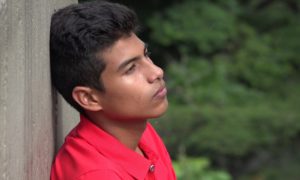 Adolescents involved in the juvenile justice system are commonly referred to mental health services in order to address the behaviors that led them to legal involvement in the first place. These services are offered via individual therapy, group therapy, substance abuse treatment, family preservation services, residential placement services, etc.
Adolescents involved in the juvenile justice system are commonly referred to mental health services in order to address the behaviors that led them to legal involvement in the first place. These services are offered via individual therapy, group therapy, substance abuse treatment, family preservation services, residential placement services, etc.
Each modality of service has its own unique advantages and disadvantages for various clients. However, all modalities generate a basic treatment plan that guides the delivery of services, a plan that theoretically addresses the proposed mechanism of change that will alleviate dysfunctional behaviors.
Over the past 10 years, I have reviewed hundreds of treatment plans across these settings. These plans are tailored to each client’s needs, but most have the same common components. For example, there is usually mention of the generic term “coping skills” that is supposed to lead to the desired change of behavior. These coping skills can include techniques such as thought identification and restructuring, positive thinking, perspective changes, variations of DBT (Dialectical Behavior Therapy) skill training and other related concepts.
Many of these techniques have been researched and proven to have some effectiveness in the treatment of behavioral health disorders. However, no treatment modality is perfect, and a unique quality of adolescents involved in the legal system is that they tend to be somewhat resistant to traditional talk therapy treatment. This creates a conundrum that I believe can be efficiently addressed by focusing on the roots of emotional experience.
I believe that by solely focusing on this concept of coping skills, we are doing the equivalent of asking adolescents to perform algebra without first having a proper understanding of addition and subtraction. In other words, we are neglecting to teach adolescents the fundamental components of emotional regulation.
In typical developing children, these fundamentals are normally established within the first few years of life via a secure and healthy attachment to their caregivers. No formal emotional regulation skills are taught per se, but the comfort and predictability of a healthy attachment allows the body to experience emotions safely. This foundation over time allows the individual to exert a measure of control over their emotional experience, and consequently permits them to regulate emotions competently enough to make safe and responsible choices.
Many of the adolescents who come to my office did not have a typical childhood, and do not possess the emotional foundation necessary to effectively regulate their emotions. Thus, I believe it is necessary and essential to establish this foundation before any higher level of coping skills are approached. Without this foundation, resistance emerges, coping skills fail, and recidivism is nearly inevitable.
So how does one consciously build an emotional foundation that is largely constructed on an unconscious level throughout the early years of life? The answer to this question lies within the body. Or more appropriately, the answer to this questions IS the body.
Research over the past several decades has discovered that emotional experiences are a product of numerous synergistic systems that vacillate throughout the brain and body. An understanding of all these systems is a complex undertaking that is both daunting and perhaps outside the scope of this article.
Instead, I believe we can simplify these dynamic interactions by focusing on the interplay of two powerful systems: the limbic system and the autonomic nervous system (ANS). Again, to avoid a rambling explanation of these two systems I will simplify by saying the limbic system is the emotional center of the brain and the ANS is the nervous system in the body responsible for the opposing phenomena of “fight or flight” and “rest and relaxation.”
The limbic system serves as the gatekeeper for all sensation the body experiences. Every sensation and stimuli must pass through this system before it progresses to any other higher-order part of the brain responsible for conscious thought. If the gatekeeper decides a certain stimulus is unsafe, it promptly directs the ANS to create an experience of fight or flight. The severity of the perception of threat then determines the strength of the fight or flight response.
A commonality shared by many of our adolescents is the tendency to consistently mislabel stimuli as being threatening and unsafe. Another commonality is that they tend to overestimate the severity of the perceived threat.
Consequently, this leads to an exaggerated emotional response to a situation, and a decreased ability to activate their rest and relax system. Another unfortunate side effect of an intense fight or flight response is a decreased ability to engage in logical thought. Thus, these adolescents are unable to access the part of the brain that is responsible for behavioral inhibition and logical thought, and therefore are unable to choose an adaptive response to a situation.
[Related: Use Child In Need of Services As Chance to Curtail Delinquency]
This leads to my last rhetorical question: How do we teach an adolescent to gain control of their body? I believe there are several steps needed to accomplish this goal. First, knowledge is power. In the paraphrased words of Sun Tzu (author of “The Art of War”), “In order to beat our enemy, we must know our enemy.”
Teaching adolescents exactly what is occurring in their body is both empowering and destigmatizing. They no longer view themselves as out of control and unmanageable. Instead, they can look at their experience the same way they would look at any other medical disorder.
Aka, their emotional experience is a result of systems in the body that are not functioning properly. I have found that this simple realization helps my clients better understand themselves and more clearly perceive the path they must take to gain control of these dysfunctional systems.
Once they gain a knowledge of emotional experience in the body, they are then taught how to identify these emotional experiences within their body. For example, anger is characterized by increased heart rate, muscle tension, sweating, feeling “hot” in the face, clenched teeth, along with numerous other symptoms unique to the individual’s anger response.
At a later point in treatment, the client can learn the cognitive components to their emotional response, but I tend to focus on the physical symptoms first. Physical symptoms are more objective and easy to identify, whereas many adolescents struggle to identify cognitive errors since they tend to justify their thoughts and deflect the idea that they are incorrectly assessing a situation.
Once they have mapped out their physical response to emotions, they can then identify the triggers in their life that produce these emotions. These triggers are typically based within interpersonal interactions, and are often present within family and school dynamics. Most adolescents can easily identify their triggers, although some triggers may be beyond their current level of insight.
After trigger identification has occurred, the client creates a plan to address triggers. Basically, this involves a recognition that a trigger is occurring or is soon to occur, and a selection of physical skills to implement before or during the trigger. A fundamental skill for this process is mindfulness. A client must be mindful of their triggers and internal sensations in order to actively address them.
Mindfulness is an amazing skill for any client to develop, and research has shown that the majority of symptom reduction that happens within treatment occurs by simply becoming mindful of one’s triggers and emotional experience. There are many techniques used to teach mindfulness, and I would argue that this is an essential state of mind to achieve before true progress can occur within treatment.
Finally, the client is taught how to control their body. There are many techniques that can be used to accomplish this goal. I am a personal advocate of biofeedback treatment, as it targets physiological arousal and allows the client to see their physical response on a computer screen. I have seen quicker and more powerful results using biofeedback treatment (I utilize heart-rate variability biofeedback treatment via the HeartMath software program) than I have seen using traditional cognitive and behavioral techniques.
Nevertheless, there are basic techniques the client should learn with or without biofeedback assistance. These techniques include exercises such as breathing retraining, somatic awareness, grounding, positive memory generation and progressive muscle relaxation. Each of these techniques has a profound affect upon the ANS, which then has a significant effect on alleviating the impact of the limbic system.
But if you had to choose one technique to perform with each client, I would recommend breathing retraining every time. This technique directly impacts the vacillations between the fight and flight system and the rest and relaxation system of the ANS. Our respiratory system impacts our cardiac system, and our cardiac output directly impacts the emotional experience of the limbic system.
This column is a brief summarization of the importance of attuning to the physical experience of our adolescent clients. It is not comprehensive nor instructive.
However, I hope to emphasize that we must teach our clients to walk before they can run. By targeting the underlying physical correlates to their emotional experience, we can empower our clients to gain control of their bodies.
And once they can control their bodies, they have a plethora of options in any situation. They will not be bound to respond impulsively and emotionally. Instead, they can make their decisions based on their goals and values, and they can work toward the future they truly deserve.
Ryan Cole is a licensed clinical psychologist at Brain and Body Integration in Colorado Springs, Colorado. He specializes in psychological assessment and biofeedback treatment of emotional disorders.
More related articles:
In for Life, After a Life of Abuse
Temper Risk and Needs Assessments With Positive Youth Development































